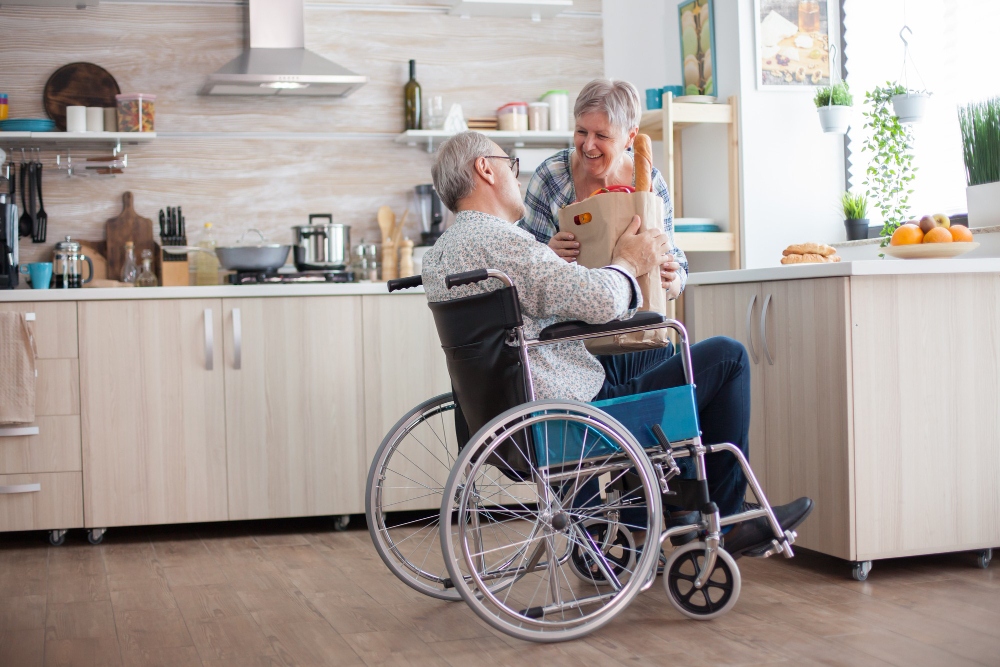For many seniors, the transition from a walker to a wheelchair is a frightening and traumatic process. Nevertheless, with a positive spirit and a few smart tips, life on the wheels can be a glorious and invigorating trip. This article takes a practical look at the 7 strategies that may help in improving independence, comfort, and quality of life for seniors moving around the world with a wheelchair.
Table of Contents
1. Home Accessibility Modifications
A safe and convenient home space is a must for wheelchair-bound seniors so they can move around flawlessly. Consider implementing simple renovations: install a wheelchair ramp, widen doorways, and add grab bars in the bathroom. You will see how fast such tweaks will make a great difference. For people who are budget-restricted and need quick help, removable ramps and portable shower chairs can be an inexpensive alternative. Investing in a lift chair recliner for seniors can also provide invaluable assistance in transitioning from a seated to a standing position.
By working out the design of the furniture and setting up the pathways, the chances of collisions and injuries can be impressively reduced. The caregiver should additionally adapt countertop heights and install accessible appliances that are specially made for disabled people in order to allow seniors to do even more tasks on their own.
2. Adaptive Clothing and Accessories
As to wheelchair users, ordinary clothing can be a problem hindering them from getting dressed and undressed. Adaptive clothing boasting velcro closures, elastic waistbands, and back openings will not only help a person to dress alone but also encourage the development of independence. Caregivers can look for specialized retailers or customize already-owned clothes to enhance their accessibility.
Useful aids such as reachers, sock aids, and dressing sticks can also help senior people perform activities that may be challenging due to limited motion or dexterity.
3. Mobility Aids and Wheelchair Attachments
Determine a functional wheelchair that meets a person’s unique requirements. Proper seating, cushioning, and modifications such as adjustable features are great for preventing pressure sores, improving posture, and also increasing comfort. Besides, features like trays, baskets, and cup holders can give comfort and order belongings.
Various transporting aids such as transfer boards, lifts, and grab bars may be used to ensure careful transfers between the wheelchair and other surfaces. They reduce the risk of falls and strain on caregivers.
4. Smart Technology and Voice Control
The current digital world has seen the emergence of smart home technology and voice control systems that could revolutionize the way accessibility works for the elderly in wheelchairs. Such smart devices as voice assistants, automatic lights, and smart thermostats can be operated via voice commands, thus encouraging independence, and decreasing reliance on caregivers for simple tasks.
Customized applications and gadgets can also become allies in simplifying daily life, from medication reminders and online shopping to entertainment and communication with family.
5. Community Resources and Support Groups
Maneuvering life in a wheelchair is not an easy journey, but there is no need for older adults to face it alone. Local aid services such as transportation, meal deliverers, and respite care can bring tremendous help and really alleviate the burden on caregivers.
Similarly, online communities and support groups can provide forums where individuals can seek help and socialize with others who may have faced similar experiences. These platforms are extremely useful in providing the required information, support, and practical tips to senior people and their caregivers.
6. Exercise and Wellness Routines
In spite of being confined to a wheelchair, seniors must still be active and keep up healthy habits in mind and body. Modifications to physical activity such as chair yoga, seated aerobics, and wheelchair sports can significantly increase strength and flexibility.
Attention should be bestowed on diet and self-care practices as well for the caregivers. Meal planning, hydration reminders, and semi-annual check-ups with healthcare providers are among the most effective tools for older people to remain healthy and live a full life.
7. Positive Mindset and Advocacy
Living life in a wheelchair may bring some challenges to seniors, but they should be equipped with an optimistic attitude and fight for their rights. Eliminating negative attitudes and stereotypes can help the elderly live a life like they have always wanted never mind their physical impairments.
Caregivers should be supportive of their loved ones and speak about accessibility problems and disability rights. Thus, they can create a more inclusive and understanding community. Supporting resilience, finding pleasure in small wins, and marking the way of the journey will allow seniors to age comfortably.
Conclusion
Making the transition from walking to using a wheelchair for seniors may be a big adjustment but, by with proper strategies and support, the elderly people can experience success and continue living their independent lives. Through these seven hacks – starting from home modifications, assistive technology, and community resources – caregivers would be in a position to help their loved ones explore the world without any hindrances.
Aging is a natural process, so the way we embrace it with grace and flexibility is actually very important. Seniors in wheelchairs can also continue living fulfilling lives by being creative and determined. They can enjoy laughter-filled days and roll through each day with dignity.




